Modern life often demands convenience, and reheating leftovers is a practical way to save time and reduce waste. However, not all foods are safe to warm up again—some can develop harmful bacteria or toxins, while others lose their nutritional value or become difficult to digest. While most people assume the microwave is a harmless shortcut, certain common ingredients may actually pose serious health risks if not handled correctly.
Reheating food isn’t just about taste or texture; it’s also a matter of chemistry and microbiology. When some foods are cooked and then cooled, the conditions may favor the growth of harmful microbes or trigger chemical transformations that produce dangerous compounds. Ignoring these risks could mean anything from mild gastrointestinal discomfort to food poisoning or exposure to carcinogens.
Knowing which foods to avoid reheating can help you make safer choices in the kitchen. Whether you’re preparing a quick lunch or repurposing yesterday’s dinner, understanding the risks is essential. Below, we explore 14 popular foods that may become toxic—or at the very least, unhealthy—when reheated. These warnings are rooted in real science, not just culinary caution. Let’s take a closer look at what to avoid putting back in the microwave or on the stovetop, and why your next meal might be safer if served fresh.
1. Chicken Caution

That leftover roast chicken might seem like the perfect quick lunch, but pause before hitting the reheat button. When chicken cools after cooking, bacteria can multiply rapidly if not refrigerated properly. These microorganisms thrive in the “danger zone” between 40°F and 140°F. Even more concerning is that uneven reheating can leave cold spots where harmful bacteria survive. The protein structure in chicken also changes during reheating, sometimes making it harder to digest and potentially causing stomach discomfort. For safety, always refrigerate chicken within two hours of cooking. When reheating, ensure it reaches 165°F throughout by using a food thermometer. Better yet, slice it into smaller pieces before reheating to promote even heat distribution and kill any lurking bacteria.
2. Rice Risks
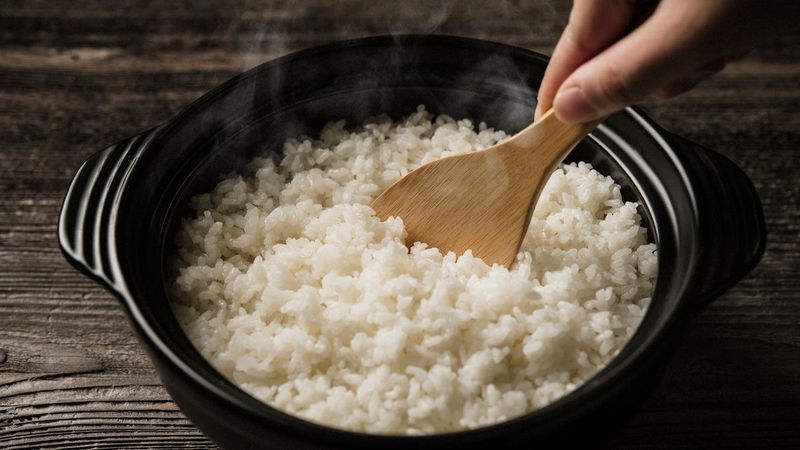
Fluffy white rice seems innocent enough, but it harbors a surprising danger many home cooks don’t realize. Uncooked rice often contains Bacillus cereus spores that survive the initial cooking process. When cooked rice sits at room temperature, these spores transform into bacteria that multiply rapidly and produce toxins that can cause serious food poisoning. What makes this particularly dangerous is that these toxins resist heat, meaning reheating won’t make contaminated rice safe again. The symptoms typically include vomiting, diarrhea, and stomach cramps that can develop within hours after eating. Always refrigerate rice within one hour of cooking, store it for no more than a day, and ensure it’s steaming hot throughout when reheated. Better yet, cook exactly what you need to avoid leftovers entirely.
3. Potato Problems
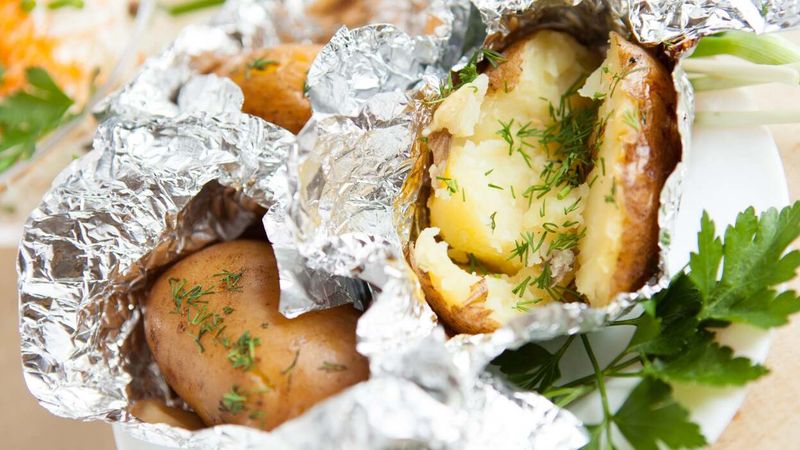
Golden, starchy potatoes make delicious leftovers, but they require special handling. When cooked potatoes cool to room temperature and remain there too long, they create the perfect environment for Clostridium botulinum bacteria to grow. This is the same bacteria responsible for botulism, a rare but potentially fatal form of food poisoning. The risk increases when potatoes are wrapped tightly in foil or stored in airtight containers that create oxygen-free environments where these bacteria thrive. The danger isn’t just from improper storage – reheating doesn’t always destroy the toxins these bacteria produce. Store cooked potatoes in the refrigerator within two hours of preparation. When reheating, ensure they reach at least 165°F throughout. For extra safety, consider storing potatoes in ventilated containers rather than airtight ones.
4. Egg Emergencies
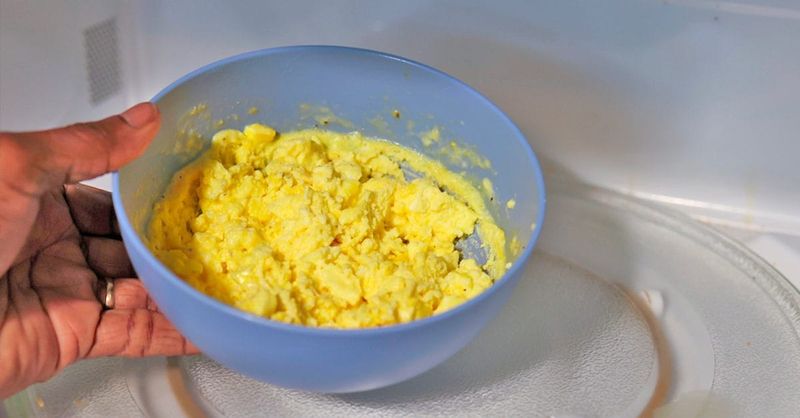
Morning scrambled eggs rarely make it to leftover status, but when they do, proceed with caution. Eggs contain protein and iron sulfide which undergo chemical changes when heated, cooled, and reheated. This process can release hydrogen sulfide gas, giving reheated eggs that unpleasant sulfur smell. Beyond the off-putting odor, reheated eggs can become rubbery, dry, and difficult to digest. The protein structure changes with each heating cycle, potentially causing stomach discomfort for some people. Bacteria growth is another concern if eggs aren’t properly refrigerated between servings. If you must reheat eggs, do so gently using low heat. Consider adding a bit of milk or butter to restore moisture. Better yet, cook only what you need fresh each time. For hard-boiled eggs, enjoy them cold in salads rather than reheating.
5. Turkey Troubles

Holiday turkey leftovers are tradition, but improper reheating could turn your festive meal into a health hazard. Like chicken, turkey contains proteins that can break down and potentially form harmful compounds when repeatedly heated and cooled. The large size of turkey pieces often leads to uneven heating, creating dangerous warm spots where bacteria thrive. Turkey’s dense texture makes it particularly challenging to reheat properly. The outer portions may reach safe temperatures while the center remains dangerously cool, allowing Salmonella and other bacteria to survive and multiply. Many food poisoning cases after holidays stem from improperly handled leftover turkey. Slice turkey into smaller, even portions before refrigerating and reheat to 165°F throughout. Use a food thermometer to verify temperature. Limit reheating to once, and discard any turkey that’s been left at room temperature for over two hours.
6. Spinach Surprises
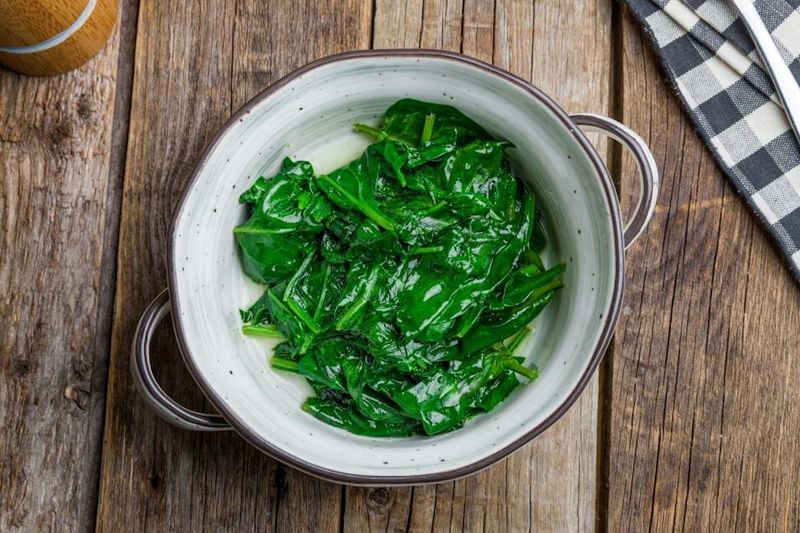
Leafy green spinach packs a nutritional punch when fresh, but reheating transforms this superfood in concerning ways. Spinach naturally contains nitrates, compounds that convert to nitrites when reheated. These nitrites can further transform into nitrosamines, which research has linked to increased cancer risk. The conversion process accelerates when spinach is left at room temperature before refrigeration or when reheated multiple times. Many people don’t realize that microwave reheating can create uneven hot spots that accelerate these chemical changes in parts of the food. High-heat cooking methods can further compound the problem. Enjoy spinach dishes immediately after cooking or eat leftovers cold in salads. If incorporation into a hot dish is necessary, add fresh spinach at the end of cooking rather than reheating previously cooked greens. This preserves both nutritional value and safety.
7. Broccoli Breakdown
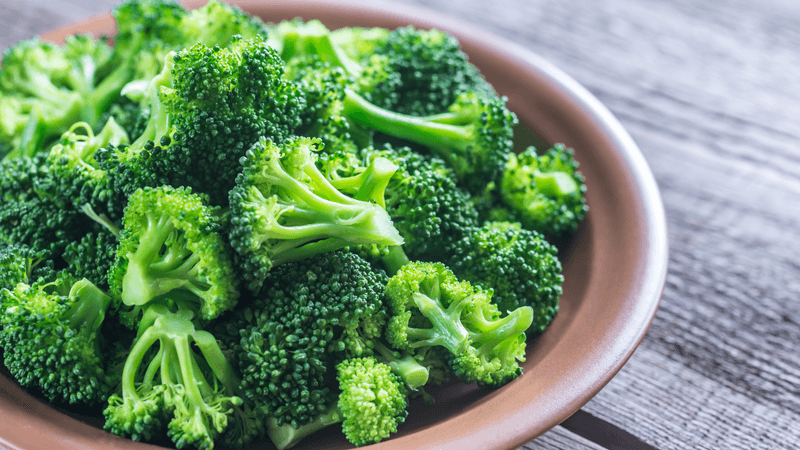
Vibrant green broccoli florets lose more than just their color when reheated. Similar to spinach, broccoli contains significant nitrate levels that convert to potentially harmful compounds during the reheating process. The cruciferous vegetable also loses up to 80% of its cancer-fighting compounds and antioxidants when reheated. Microwaving broccoli for a second time particularly accelerates nutrient loss. The high water content in broccoli creates steam pockets that unevenly distribute heat, causing some areas to essentially overcook while others remain cool. This temperature variation affects both safety and nutritional integrity. For maximum benefits, steam broccoli fresh just before eating. If you have leftovers, incorporate them into cold dishes like salads or vegetable platters. When planning meals, calculate portions carefully to avoid having broccoli leftovers that would require reheating.
8. Carrot Concerns

Sweet, crunchy carrots transform dramatically when reheated, and not for the better. Root vegetables like carrots naturally accumulate nitrates from soil during growth. While these compounds are harmless in their original form, reheating triggers a chemical conversion to nitrites and potentially to nitrosamines, which research has linked to increased cancer risk. The longer carrots sit at room temperature after initial cooking, the more bacteria multiply and contribute to this conversion process. Reheating accelerates these changes, particularly when using high-heat methods. Most people don’t realize that even baby carrots, which children often consume, contain these compounds. Enjoy carrots freshly cooked or raw for maximum safety and nutrition. If incorporating leftover carrots into another dish, add them cold toward the end of cooking. For soups and stews, consider removing carrots before storing leftovers, then adding fresh ones when reheating.
9. Celery Secrets

Crisp celery stalks hide a secret that becomes problematic when reheated. The vegetable naturally contains nitrates that convert to nitrites during reheating. When nitrites combine with proteins in your digestive system, they can form nitrosamines – compounds linked to increased cancer risk in numerous studies. Many cooks don’t realize that celery actually ranks among the vegetables with the highest nitrate content. This makes it particularly concerning when included in soups, stews, and casseroles that might be reheated multiple times. The slow-cooking methods often used for these dishes can exacerbate the conversion process. When making soups or stews you plan to reheat later, set aside the celery portion and add it fresh after reheating. Alternatively, enjoy celery raw for its satisfying crunch and maximum nutritional benefits. If using celery as an aromatic base for cooking, consider removing it before storing leftovers.
10. Garlic Gotchas
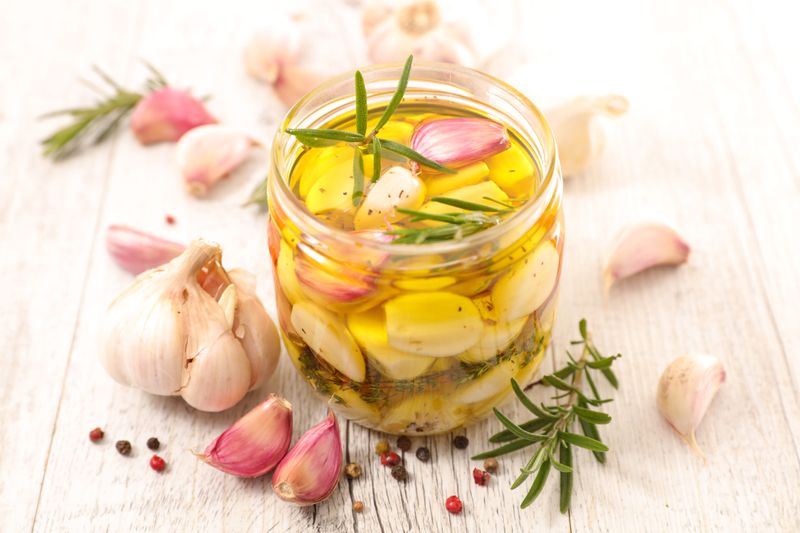
Aromatic garlic adds flavor to countless dishes, but reheating garlic-infused foods carries hidden dangers. When garlic is left at room temperature in oxygen-free environments – like in oil or sealed containers – it can develop Clostridium botulinum, the bacteria causing botulism, a potentially fatal form of food poisoning. Reheating doesn’t always destroy the toxins these bacteria produce. The problem worsens when garlic is minced or crushed, releasing compounds that accelerate bacterial growth. Many home cooks unknowingly create risk by storing garlic bread, garlic oil, or garlic-heavy dishes improperly before reheating. Always refrigerate garlic-containing dishes promptly after cooking. Avoid making large batches of garlic oil; instead, prepare small amounts for immediate use. When reheating dishes containing garlic, ensure they reach at least 185°F throughout to maximize safety, and never reheat more than once.
11. Fish Fiascos

Delicate fish transforms dramatically when reheated, often becoming a pale shadow of its former self. The proteins in fish break down quickly after cooking, changing both texture and flavor when heat is applied a second time. This protein degradation can create a strong, unpleasant fishy odor that permeates your entire kitchen. Beyond the sensory disappointment, reheated fish can cause digestive discomfort for many people. The oils in fish, especially fatty varieties like salmon, oxidize during storage and reheating, potentially creating compounds that cause stomach upset. Histamine levels can also increase in certain fish species when improperly stored, leading to scombroid poisoning symptoms. If you must reheat fish, do so gently using low heat in a covered pan with a splash of moisture. Better options include enjoying leftover fish cold in salads or making fish cakes with leftovers, which incorporate new ingredients and flavors.
12. Mushroom Mysteries
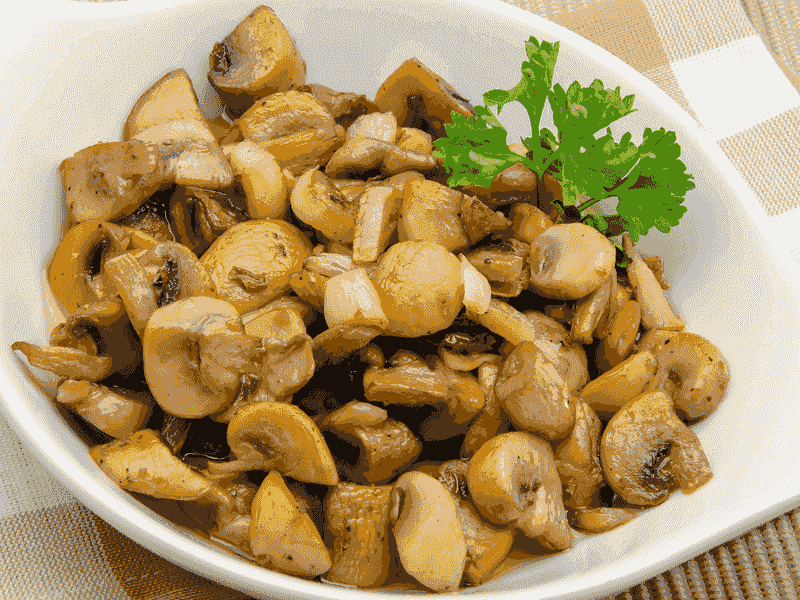
Earthy mushrooms contain delicate proteins that undergo significant changes when reheated. These proteins begin breaking down immediately after cooking, and the process accelerates during storage. By the time you reheat mushrooms, their nutritional profile and digestibility have often changed substantially. Reheated mushrooms can cause digestive discomfort because their altered protein structure becomes more difficult for your body to process. The problem compounds if mushrooms weren’t stored properly, as they provide an ideal environment for bacteria growth. Their spongy texture absorbs surrounding moisture and bacteria, making thorough reheating challenging. For the best flavor and safety, sauté mushrooms fresh just before serving. If you have leftover mushrooms, incorporate them cold into salads or sandwiches. When planning meals with mushrooms, prepare only what you’ll consume immediately to avoid the reheating dilemma altogether.
13. Beet Blunders
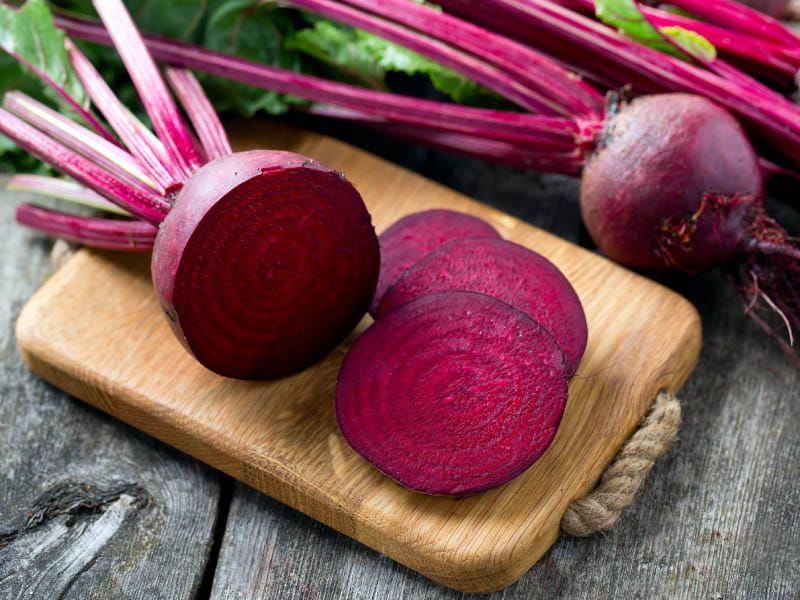
Vibrant beets stain everything they touch, including potentially your health when reheated. Like several other vegetables on this list, beets naturally contain high levels of nitrates that convert to nitrites during the reheating process. These nitrites can further transform into nitrosamines in your digestive system, compounds that research has linked to increased cancer risk. The vibrant color of beets masks these chemical changes, giving no visual indication that anything concerning has occurred. Many people don’t realize that even organic beets contain these naturally-occurring compounds. The longer beets sit at room temperature before refrigeration, the more these conversions progress. Enjoy beets freshly roasted or boiled, or incorporate leftover beets into cold dishes like salads. If you must include beets in a reheated dish, add them cold after the main dish has been warmed. This preserves both their nutritional benefits and their gorgeous color.
14. Processed Meat Perils

Bacon, sausages, and deli meats might make convenient leftovers, but reheating these processed products creates concerning chemical reactions. These meats contain added preservatives, particularly nitrates and nitrites, that help maintain color and prevent bacterial growth. When reheated, these compounds can form nitrosamines, which research has linked to increased cancer risk. High-temperature reheating methods like frying or microwaving accelerate these chemical transformations. The fat content in processed meats compounds the problem, as it can become rancid during storage and release harmful compounds when reheated. Many processed meats also contain high salt levels that concentrate further during reheating. If you must reheat processed meats, use gentle, low-temperature methods. Better yet, consume them cold in sandwiches or salads. Health organizations worldwide recommend limiting processed meat consumption altogether, so consider this reheating concern another reason to moderate your intake.
Leave a comment